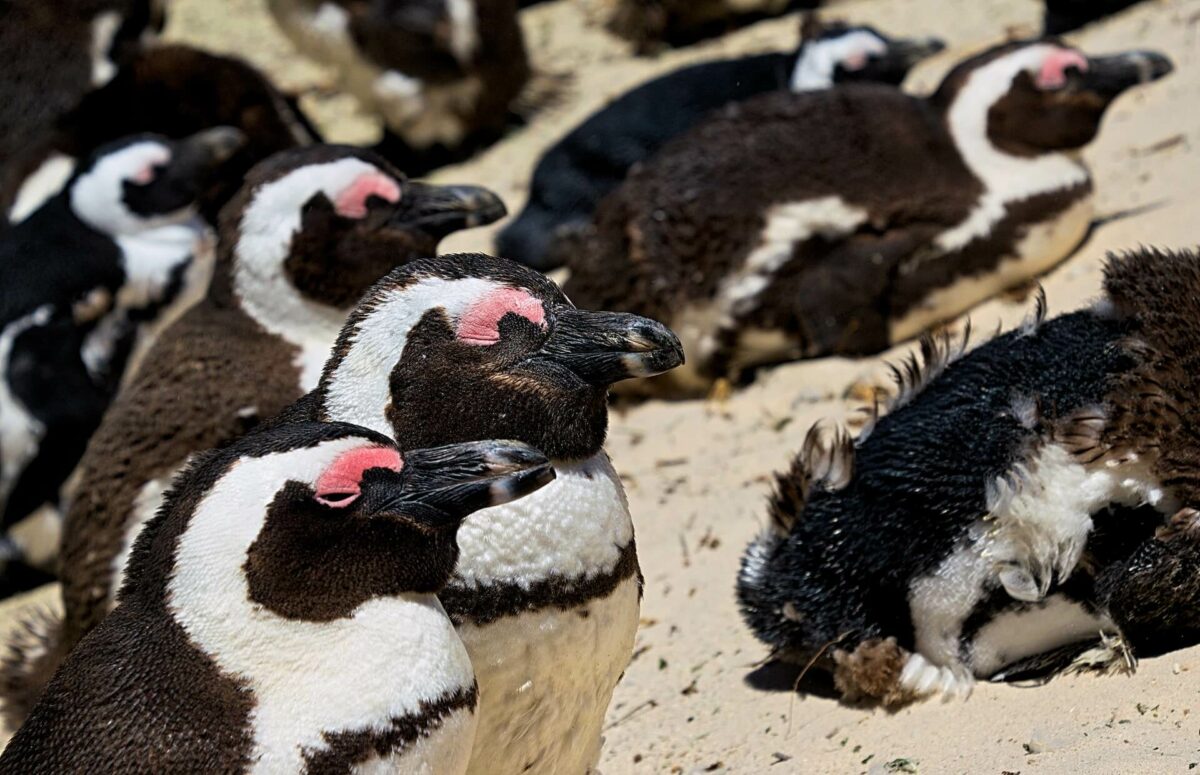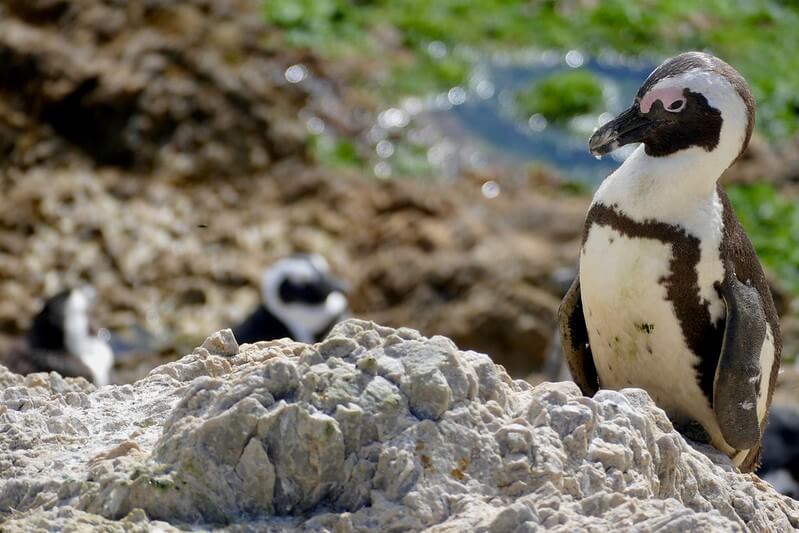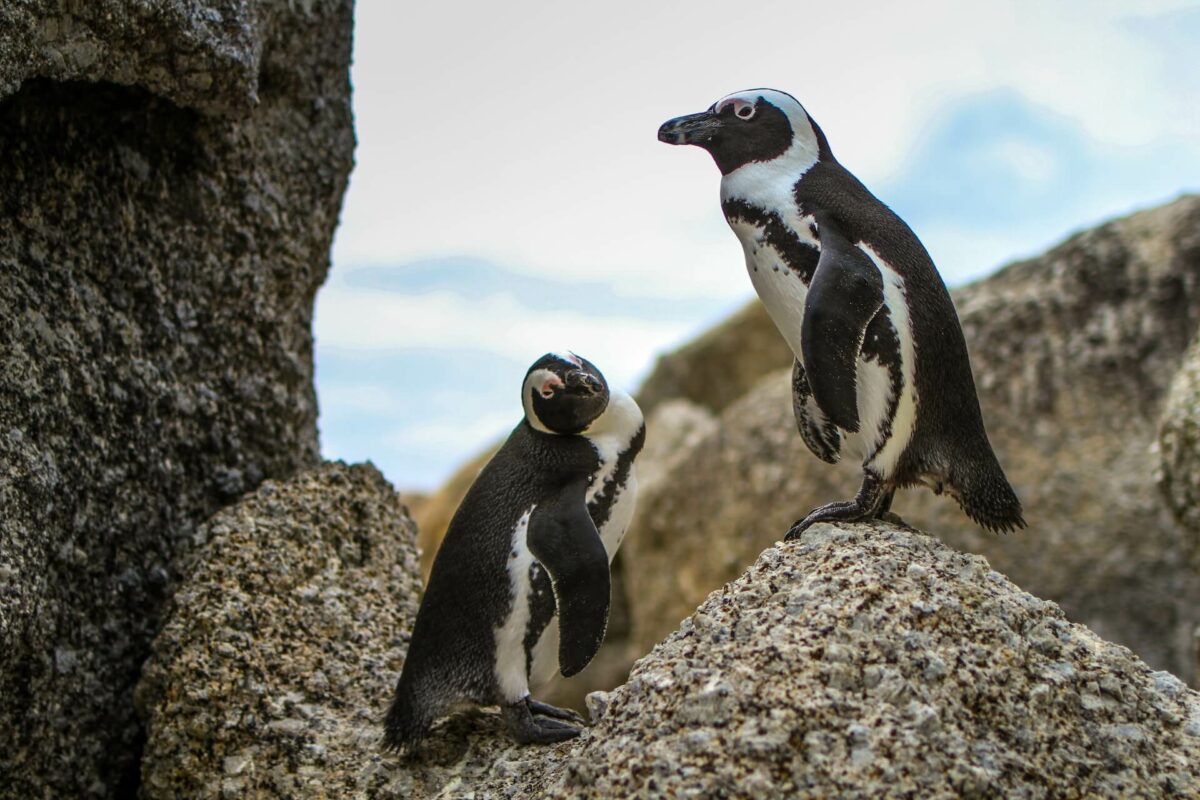There is no denying that penguins are some of the most lovable animals out there. In fact, they are officially classified as “charismatic megafauna” which is scientific proof that they’re irresistible to most people.
While Africa is not the place that normally comes to mind when thinking about where penguins live, this old-world continent is in fact home to one penguin species: the African penguin.
Although the weather on land can get quite warm, seawater surrounding the African coasts is pretty chilly which makes it an excellent spot for these endearing sea birds to dive and forage.
But there’s a lot more to these tropical species than warm beaches and looking cute and that’s why today I will share with you 6 fun African penguin facts.
1. African Penguins Are Amazing Swimmers And Divers
African penguins may look like a bunch of tiny drunk men in tuxedos while walking on land but once they get in the water not even Michael Phelps would be able to keep up with them!
These penguins enjoy cruising through the sea at an average speed of 7 km / 4.4 miles per hour but can easily reach speeds of 24 km / 15 miles per hour when engaged in a high-speed chase, whether as a predator or prey.
To accomplish these impressive speeds they use their webbed feet as rudders while their wings are moved like flippers.
Just so you get an idea of how fast this is, the highest speed reached by a swimmer is 10 km / 6 miles per hour and we’re talking about a record-breaking Olympic swimmer here.
When it comes to diving African penguins can hold their breath for up to 3 minutes and reach depths of 130 m / 427 feet; for reference, the great pyramid of Giza is 130 m / 427 feet tall.
They can reach such colossal depths quickly because they will retract their heads into the shoulders and pull their feet into their bodies so that the overall body shape is perfectly streamlined like a torpedo.
2. African Penguins Are Also Called Jackass Penguins
The African penguin has a very particular and loud braying cry that resembles a donkey’s call and is therefore commonly called “jackass penguin”.
This penguin species are very social and communicate with conspecifics via different calls and body language. There are 3 distinct calls for 3 different scenarios:
- The “bray”: The braying call is used to attract a mate so it is most commonly used during the breeding season.
- The “yell”: This is also referred to as a “contact call” and is used when defending a particular territory or signaling location.
- The “haw”: The haw is used by bonded pairs when trying to locate each other, especially when one is on land and the other is at sea.
Besides these 3 basic calls, the African penguin also has a “name” which is a unique vocalization that distinguishes it from the rest of the birds in the colony.

Other common names for the African penguin are Cape penguin and South African penguin.
3. African Penguin Populations Are Rapidly Decreasing
African penguin populations have plummeted, and continue to do so, at an alarming rate.
At the beginning of the 20th century, these charismatic birds numbered millions and were abundant throughout their range.
Sadly, today only about 41,700 individuals remain and the population trend is “decreasing”.
Besides being classified as “endangered by the IUCN (International Union for Conservation of Nature) the African penguin was also evaluated by an IUCN specialist group in October 2021 and is currently assessed as “largely depleted”.
As I’m sure you can guess, human activity is responsible for the decline in the African penguin population. Some of the factors that have had the most impact on these sea birds are:
- Introduction of invasive predatory species such as domestic dogs and cats.
- Overfishing.
- Oil spills.
- Climate change.
- Although no longer common practice, African penguin eggs were considered a delicacy in France and were therefore harvested irresponsibly for a long time.
Currently, there are only 28 African penguin colonies in the wild and 87% of the entire population is represented in just 8 of these colonies.
4. African Penguins Have Built-In Goggles
Just in case you were wondering if African penguins have good vision underwater they have an adaptation that allows them to have extraordinary vision both on land and underwater.
African penguins, like all penguin species, have “nictating membranes”, these are commonly referred to as a third eyelid and it is a clear membrane that covers the eyeballs while penguins are underwater.
The nictating membrane provides the penguin with clear vision underwater while also protecting its eyes from any debris.
It’s basically like having built-in goggles that automatically activate once the penguin is submerged.
5. African Penguins Have Creative Ways To Remain Cool
Although the African penguin feels just right on the cooler African waters, it can sometimes get really hot on land. Luckily, the African penguin has several tools that help it thermoregulate.
This bird species has a special adaptation that allows it to flush out the heat through patches of bare skin located right above the eyes which makes the skin on these bare areas look pink or red during scorching days.

Also, when a penguin remains on land during the day it will turn its back to the sun in an effort to keep its fins (wings) and face from getting too warm.
Likewise, an African penguin will regularly pant and hold its wings away from its body in an effort to release excess heat.
Ruffling its feathers to allow the warm air concentrated close to its body to escape is another cooling technique commonly employed by this species.
African penguins are monogamous and those in mated pairs will swim out to forage 20 – 60 km / 12 – 37 miles away from their colony.
However, single penguins will travel as far as 100 km / 62 miles during foraging trips and find their way back home without issues.
Even more impressive, there once were 3 African penguins who were relocated and released with tracking devices that were recorded to swim 1,287 km / 800 miles in just one month to get back to their home range.
I am a lover of everything nature and animal related with over 15 years of experience in the field of wildlife rescue and education. Currently living in Colombia working with wild and domestic animals and spending all my free time writing about them 🙂

